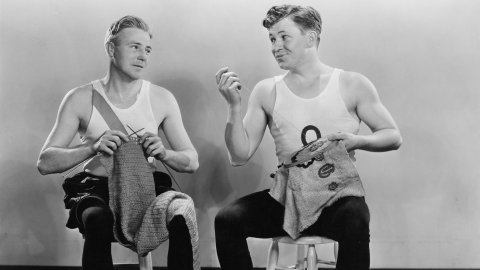Neanderthals Also Divvied Up Some Chores by Gender

Turns out gender roles date as far back as 100,000 years. Erin Blakemore from the Smithsonian has picked up on an interesting bit of research, showing evidence of how our Neanderthal ancestors split the daily chores by sex — a revelation in the scientific community, which has thought this kind of division was only typical of sapiens societies.
The Spanish National Research Council made these conclusions and published their research in the Journal of Human Evolution after examining 99 incisors and canines from 19 individuals from three different work sites. So, how could one possibly glean what chores were done by looking at some teeth? Well, Neanderthals liked to use their mouths as kind of a third hand. Many of us still do so today, but not to the same extent.
The teeth in the female fossils showed deeper grooves than the males, showing a distinct split in tasks that would require a “third hand.” There were more nicks in the enamel and dentin portions of the upper incisors and canines of the males, whereas females displayed more imperfections in the lower portions of their teeth. The researchers note that they cannot make any certain conclusions as to what kind of work these teeth did, just that there was a division of tasks by sex. However, it’s custom within the community to think that women were primarily responsible for preparing furs and crafting garments, while the males sharpened tools with their teeth. Though, the teeth show a limited view of the Neanderthals’ day-to-day lives and activities. Almudena Estalrrich, researcher at the Spanish National Museum of Natural Sciences, said in a press release:
“Nevertheless, we believe that the specialization of labor by sex of the individuals was probably limited to a few tasks, as it is possible that both men and women participated equally in the hunting of big animals.”
Read more at Smithsonian.
Photo credit: Shutterstock





